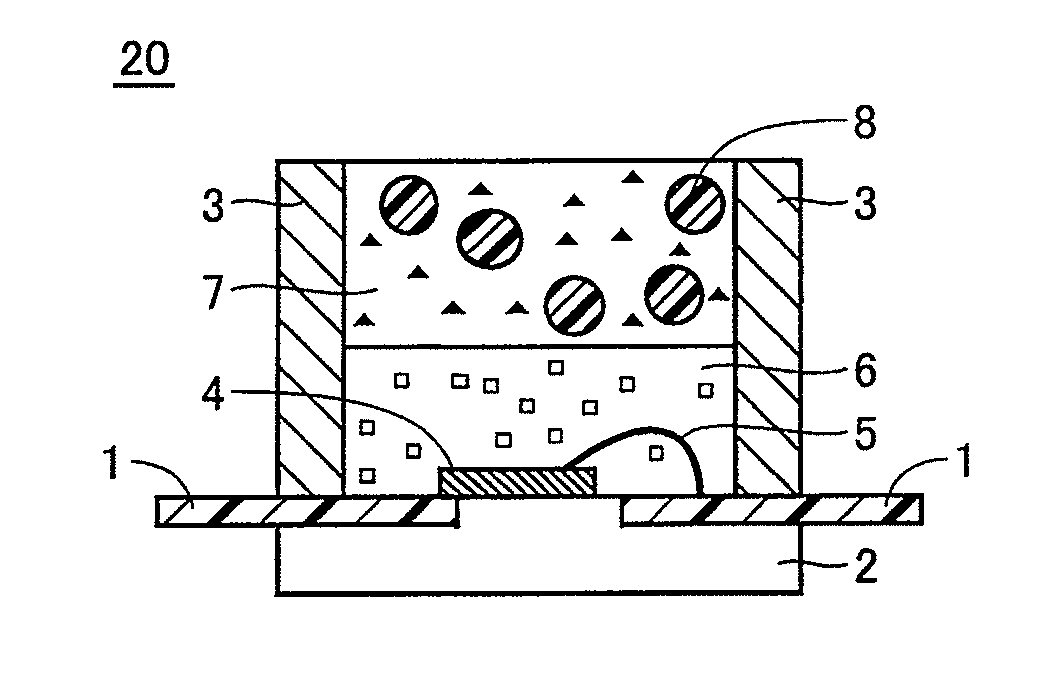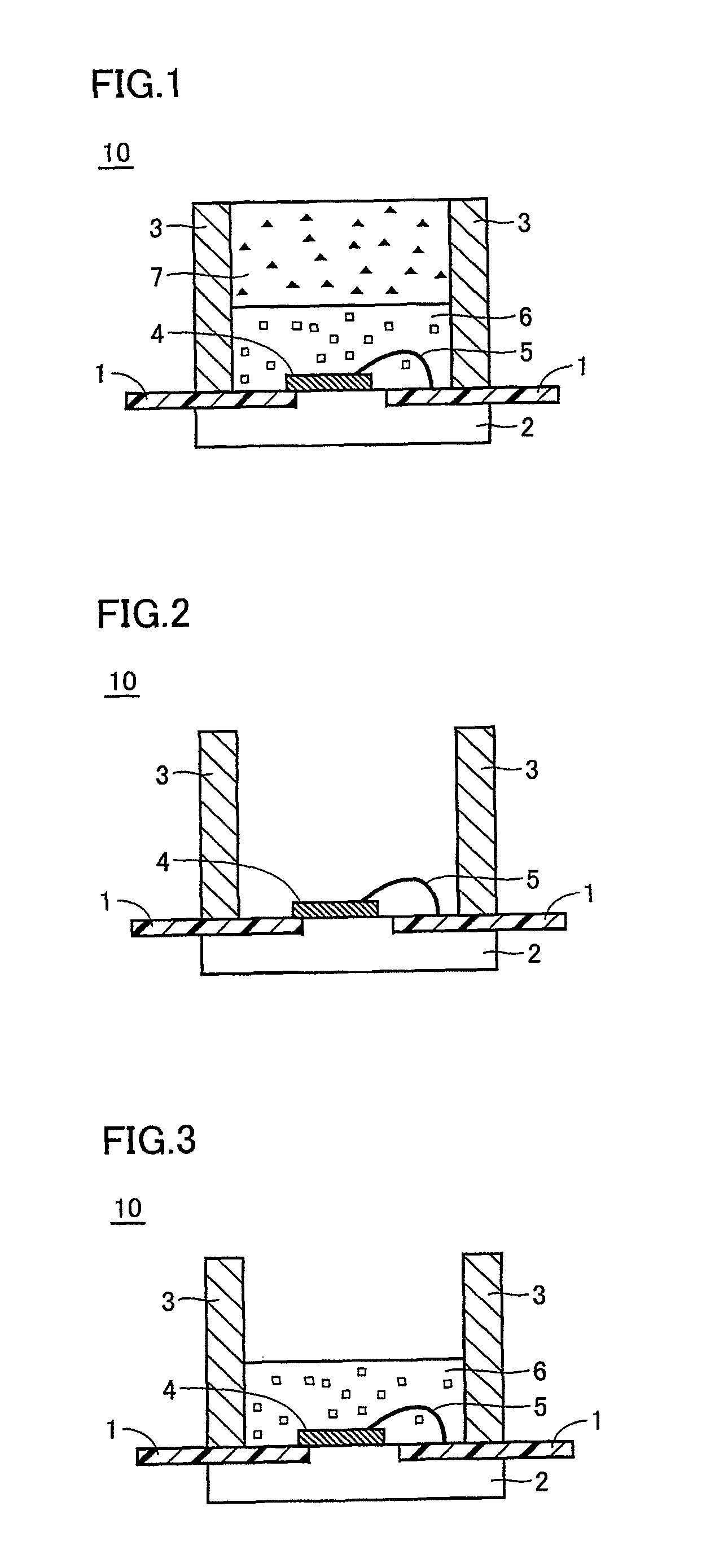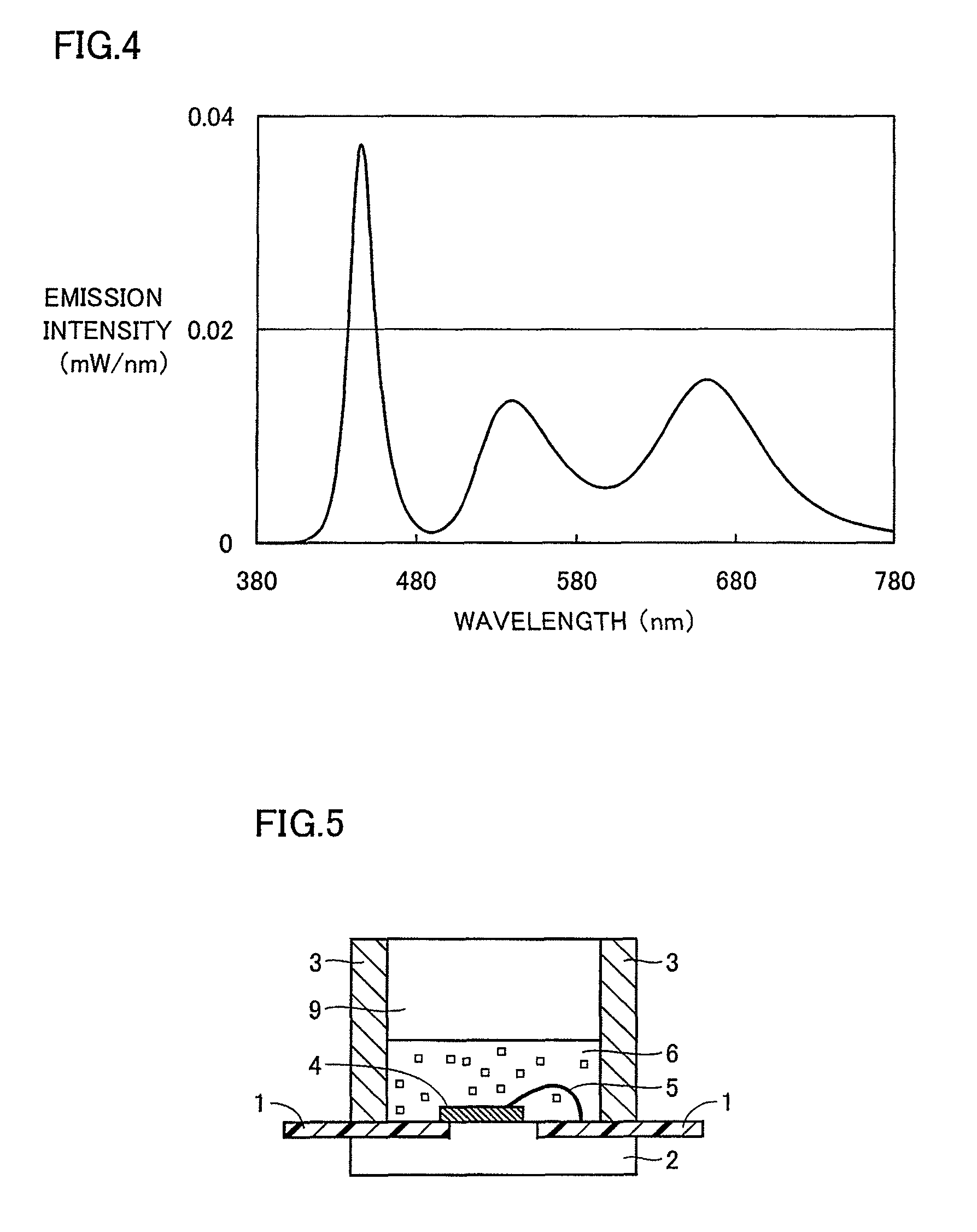Light emitting apparatus and method for manufacturing thereof
a technology light emitting device, which is applied in the manufacture of electrode systems, electric discharge tubes/lamps, discharge tubes luminescnet screens, etc., can solve the problems of performance degradation of light emitting apparatus, loss of color emission intensity balance, and difficulty in implementing ideal so as to prevent performance decline and degradation, improve color reproducibility and brightness, and reduce the influence of light scattering
- Summary
- Abstract
- Description
- Claims
- Application Information
AI Technical Summary
Benefits of technology
Problems solved by technology
Method used
Image
Examples
first embodiment
[0038]FIG. 1 is a cross section of a light emitting apparatus in the present embodiment. Light emitting apparatus 10 is constituted of a substrate 2 on which an electrode 1 is formed, a package 3 and a light emitting device 4 that are mounted on electrode 1, a wire 5 connecting light emitting device 4 and electrode 1, and a wavelength conversion unit. The wavelength conversion unit includes a first wavelength conversion unit 6 containing semiconductor nanoparticles and a second wavelength conversion unit 7 containing Eu-activated β-sialon phosphor that are stacked in order of propagation of light from light emitting device 4.
[0039]Electrode 1 is electrically connected by wire 5 to light emitting device 4. As the conductor that forms electrode 1, a material serving as an electrical conduction path for electrical connection with light emitting device 4 has to be used. Specifically, a metallized layer containing particles of a metal such as W, Mo, Cu, or Ag for example may be used. Sub...
second embodiment
[0057]Then, by a similar method to the first embodiment, three different light emitting apparatuses are fabricated in which respective contents of the Eu-activated β-sialon contained in the second wavelength conversion unit are different. More specifically, three different light emitting apparatuses are produced in which respective amounts of Eu-activated β-sialon phosphor per 1 g of the silicone resin (SCR1011) in second wavelength conversion unit 7 are (a) 0.03 g, (b) 0.1 g, and (c) 0.3 g. As the silicone resin, SCR1011, which is the same as the first embodiment, is used and stacked to a thickness which is substantially identical to that of the second wavelength conversion unit shown in FIG. 1.
third embodiment
[0065]The present embodiment is identical to the light emitting apparatus of the first embodiment except that resin flakes 8 are contained in second wavelength conversion unit 7 of the first embodiment. FIG. 8 is a cross section of a light emitting apparatus in the third embodiment. Resin flakes 8 dispersively mixed in second wavelength conversion unit 7 are not particularly limited as long as they are an optically transparent material, and mainly a silicone or epoxy based material is used. While resin flakes 8 in the shape of beads are commonly used, the shape is not particularly limited to this. Respective sizes of resin flakes 8, however, are preferably uniform. In the present embodiment, flakes of a resin having a refractive index identical to or close to that of the resin layer forming second wavelength conversion unit 7 are used. Here, the refractive index of the resin flakes may be different from the refractive index of the resin layer so that light scattering is utilized. Fu...
PUM
 Login to View More
Login to View More Abstract
Description
Claims
Application Information
 Login to View More
Login to View More - R&D
- Intellectual Property
- Life Sciences
- Materials
- Tech Scout
- Unparalleled Data Quality
- Higher Quality Content
- 60% Fewer Hallucinations
Browse by: Latest US Patents, China's latest patents, Technical Efficacy Thesaurus, Application Domain, Technology Topic, Popular Technical Reports.
© 2025 PatSnap. All rights reserved.Legal|Privacy policy|Modern Slavery Act Transparency Statement|Sitemap|About US| Contact US: help@patsnap.com



